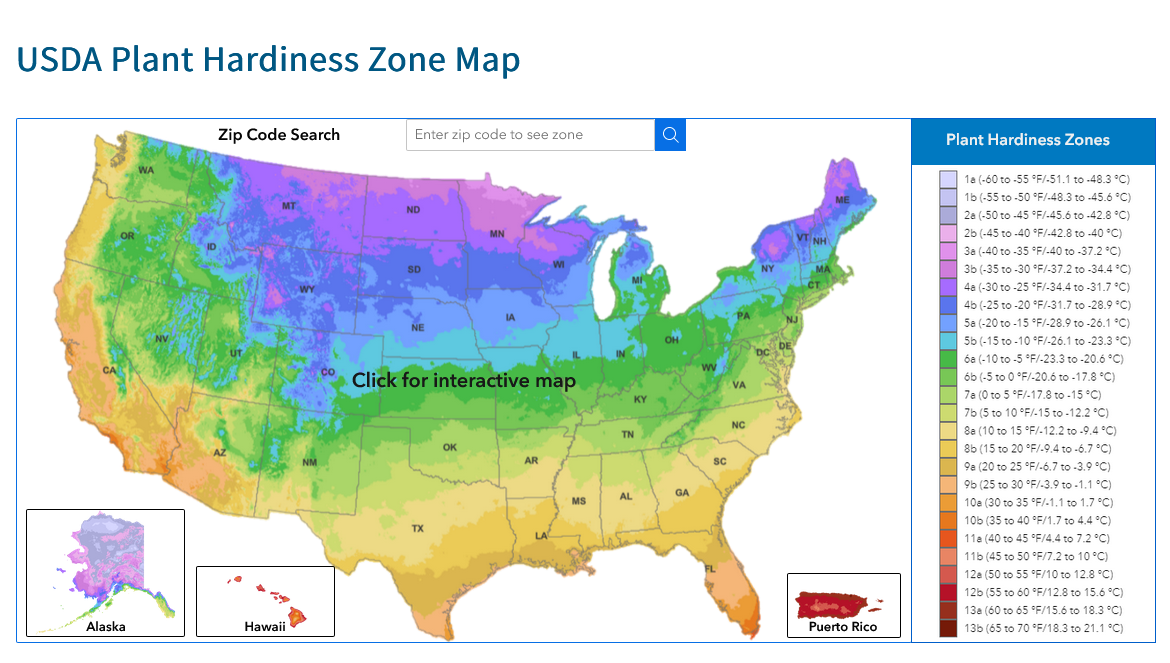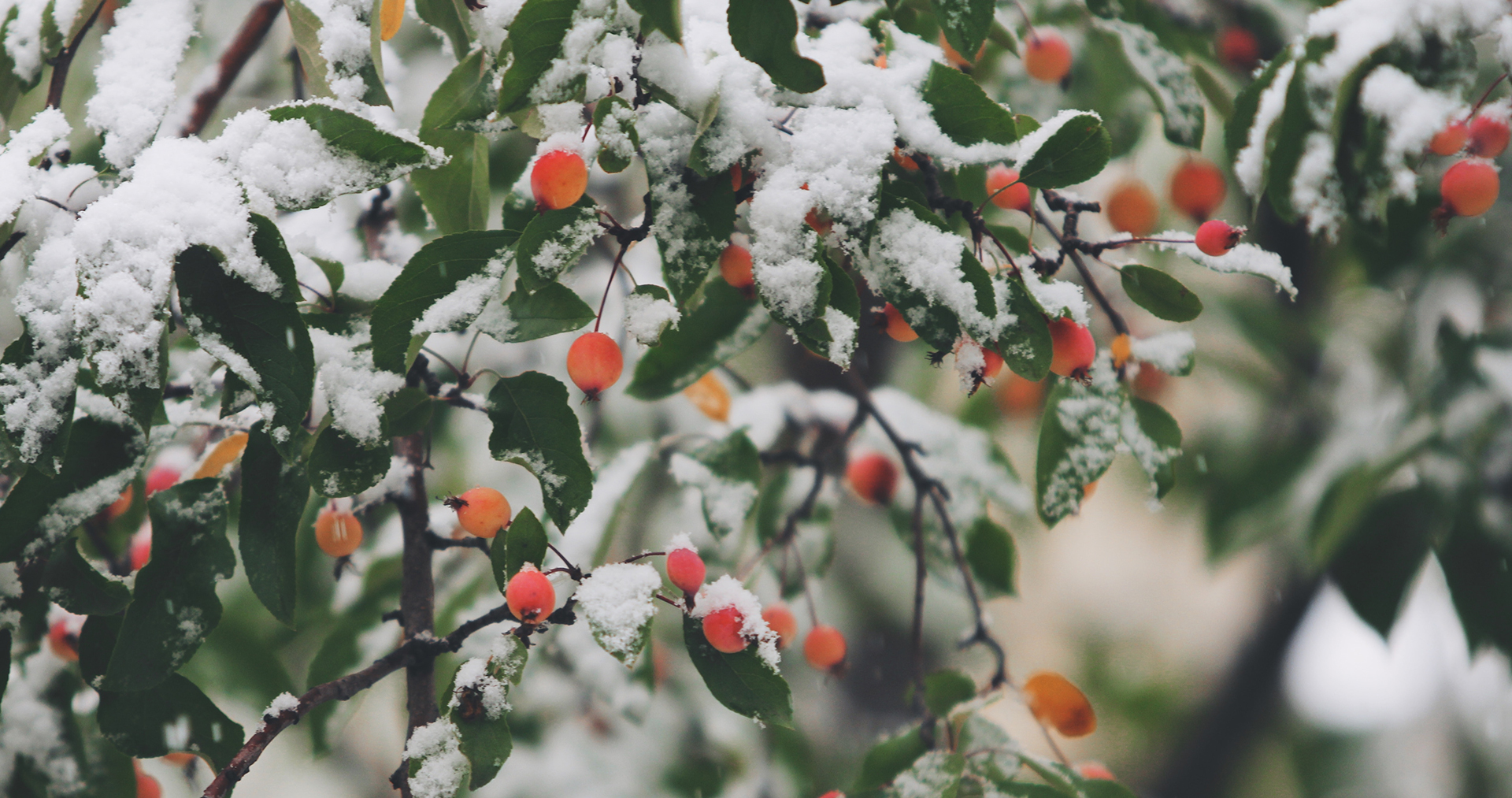Winter is coming, and your garden needs to be ready. If you don’t prepare, the cold weather can damage your plants and lawn. Winter-proofing isn’t just for looks; it helps your garden stay healthy and makes it easier to get things growing again in the spring.
Skipping winter prep can lead to problems later. The ground can shift from freezing and thawing, damaging your lawn and plants. It can also crack your pathways and patios, leading to expensive fixes.
To get started, you need to know your garden’s needs, your local weather, and how to take care of your plants in the cold. We’ll cover how to plan for winter, how to care for your lawn and plants, and what gear you’ll need. We’ll also have tips for professionals to keep their clients’ gardens in good shape.
Get ready to prepare your garden for winter. A little work now can help your outdoor space stay nice all year round.
Knowing Your Zone: Your First Step in Preparing for Winter
What’s Your Zone?
Before you start winter-proofing your garden, it’s crucial to know your gardening zone. In New Jersey, especially in Monmouth County, you’re most likely in USDA Hardiness Zone 7. This zone is based on the average lowest winter temperatures and helps you pick the right plants for your garden.
Why Zones Matter in New Jersey
In New Jersey, we mainly deal with Zones 6 and 7. For Zone 7, expect average extreme low temperatures between 0°F and 10°F. Knowing your zone is key to selecting plants that can handle our winters. It also guides your winter-proofing efforts, helping you focus on what’s essential for your garden’s specific needs.
How to Find Your Zone
Finding your zone is simple. You can use the USDA Plant Hardiness Zone Map, where entering your zip code tells you your zone. Local nurseries and gardening clubs are also good sources for this information, especially if you’re looking for advice tailored to Monmouth County.
Putting Zone Knowledge to Work
Once you know you’re in Zone 7, you can get down to the details. Your zone will guide your choices in plants, as well as the timing for tasks like fertilizing and winter-proofing. For example, the ideal time to winterize your garden in Zone 7 will differ from other zones.
By aligning your gardening practices with the Zone 7 guidelines, you’ll have a better chance of having a garden that’s not just good-looking, but also resilient through the New Jersey winter.
 Lawn Care Before Winter
Lawn Care Before Winter
Mowing: Final Cut Details
Prepare your lawn for winter by adjusting your mower blades. Aim for a grass height of 2 to 2.5 inches. This helps protect the grass from cold and keeps away pests. Plan your last mow one or two weeks before the first frost.
Aeration: Why It’s Important
Aeration helps your lawn get ready for winter. It makes holes in the soil so water and nutrients can reach the grass roots easier. This way, your lawn is stronger in the cold and grows better in the spring.
Fertilizing: What to Use and When
Use a slow-release granular fertilizer high in phosphorus before winter. This gives your lawn the nutrients it needs to last through winter. Apply the fertilizer in late fall.
Leaf Cleanup: Keep It Clear
Remove fallen leaves regularly. Leaves block sunlight and can cause your lawn to become too moist, attracting pests. Use the leaves as mulch or compost if you can.
By following these steps, you help your lawn stay healthy through winter and be ready for spring.
Protecting Your Plants
As winter approaches with its frosty demeanor, the need to shield your plants from its icy grasp becomes paramount. Here’s a tailored guide to ensuring your green companions weather the winter with grace and emerge in spring with vibrant vitality:
Mulching: How and Why to Mulch Before Winter
Mulch keeps your plants warm and holds in water. Lay down 2 to 4 inches of straw, leaves, or wood chips around your plants. This helps keep the cold out and also makes your soil better over time.
Watering: Tips on Watering Schedules Leading Up to the First Freeze
Even in winter, plants need water. Water helps them handle the cold better. Keep watering your plants, especially new trees and bushes, until winter starts. Do it early in the day so they have time to soak it up.
Wrapping and Insulating: Protecting Sensitive Plants from Frost
Some plants can’t handle frost. For these, wrap them in cloth or old blankets when it’s going to be frosty. You can also add more mulch around them for extra warmth.
Transplanting: Moving Delicate Plants Indoors or to a Sheltered Spot
Some plants can’t stay outside in winter. Move these inside or to a spot that’s protected from wind and cold. Make sure they still get enough light and aren’t near heating vents.
By doing these things, you help your plants get through winter and be ready for spring.
Preserving Hardscape and Garden Structures
While your plants go dormant in winter, your garden structures face the cold. It’s important to get them ready for winter too, so they last longer and are good to go in the spring. Here’s how to prepare the built parts of your garden for winter:
Cleaning and Storing: Furniture and Decor
The first step in protecting your hardscape elements is a thorough cleaning. Remove any dirt, debris, or algae from your garden furniture, fountains, and other hardscape items. Once cleaned, store smaller items like furniture and portable fountains in a dry, sheltered place. If storage space is a constraint, consider investing in durable, weather-resistant covers to shield them from the elements.
Repairing: Fixing Any Cracks or Damages Before They Worsen in Winter
Winter’s cold can be a cruel foe to the hardscape elements in your garden. Any existing cracks or damages can worsen with the freeze-thaw cycle characteristic of winter. Inspect your pathways, patios, retaining walls, and other stone or brick structures for cracks or loose components. Repair any damages you find, however minor they seem. Sealing cracks and replacing damaged parts now will prevent more costly repairs in the spring.
Winter-safe Decor: Introducing Items That Can Withstand Winter Conditions
Your garden can still look nice in winter. Use decorations made from materials that can handle the cold, like stone or metal. This adds some fun to your garden without worrying about the weather.
By looking after all parts of your garden in winter, you make sure it’s all set for spring.
Safeguarding and Preparing Your Water Features
Water features are often the tranquil heart of a garden, offering a serene retreat for both the beholder and the diverse life it supports. The stillness of winter, with its icy demeanor, poses a unique challenge to these aqueous realms. Here’s how you can ensure they remain a sanctuary even as the frost descends:
Ponds and Small Lakes: Tips on Preventing Freezing and Protecting Aquatic Life
- Keep a section of your pond’s surface water moving using a pump, waterfall, or aerator. This will hinder ice formation and provide much-needed oxygen for your aquatic inhabitants.
- Install a Pond Heater or De-icer: These gadgets create an ice-free zone, allowing gas exchange which is crucial for the health of your fish and other aquatic life.
- Provide Shelter: Floating pond tents or netting can provide some shelter from harsh winds and collect falling leaves that might otherwise decay in the water, affecting water quality.
- Check Water Quality: Before winter sets in, test your water for any imbalances and rectify them. Healthy water is the first line of defense for your aquatic life.
- Reduce Feeding: As temperatures drop, the metabolism of your fish slows down. Reduce feeding to prevent leftover food from fouling the water.
Fountains: Winterizing Steps and Storage Tips
- Drain and Dry: Before the first freeze, drain all water from your fountain to prevent ice damage. Ensure it’s thoroughly dry to prevent any moisture from freezing and causing cracks.
- Clean Thoroughly: Scrub away any algae, dirt, or debris. A clean fountain is less likely to have issues when it’s time to bring it back to life in the spring.
- Disassemble: If possible, disassemble your fountain and store it indoors. This will protect it from frost, snow, and icy winds.
- Use Fountain Covers: DIf indoor storage isn’t an option, invest in a high-quality fountain cover. Ensure it’s snug and secure so it stays in place throughout winter.
- Lubricate Pump: Remove, clean, and lubricate the pump, storing it indoors. This prolongs its life and ensures it’s ready for re-installation come spring.
Taking the time to winterize your water features not only preserves their beauty and functionality but also ensures the vitality of the aquatic life they support. As the rest of the garden succumbs to winter’s slumber, your water features can continue to exude a serene ambiance, heralding the promise of the vibrant life awaiting in the spring.
Preparing Trees and Shrubs for the Cold
 Trees and shrubs are strong, year-round parts of your garden. But they still need some help to get through the winter. Here’s how to prepare your trees and shrubs for the cold:
Trees and shrubs are strong, year-round parts of your garden. But they still need some help to get through the winter. Here’s how to prepare your trees and shrubs for the cold:
Pruning: When and How to Prune Before Winter
- Timing: The ideal time for pruning most trees and shrubs is during the late winter or early spring when they are dormant. However, for summer and fall flowering trees and shrubs, late fall after leaf drop can also be a suitable time for pruning.
- Technique: Utilize sharp, clean pruning tools to make precise cuts. Remove dead, diseased, or damaged branches first. For healthy branches, cut back to a bud or the collar of a branch. Avoid cutting too close to the trunk or leaving a stub.
- Purpose: Pruning helps to remove weak or dead limbs, allowing the tree to focus its energy on strong, healthy growth. It also prevents potential damage from falling limbs during winter storms.
Wrapping: Protecting Young Trees and Certain Shrubs from Cold Damage
- Material: Use commercial tree wraps, burlap, or other protective material to wrap the trunks of young trees and sensitive shrubs. Start from the base and work your way up to the lower branches.
- Protection: Wrapping prevents sunscald, frost cracks, and other cold-related damages. It also deters small animals from gnawing on the bark.
- Duration: Apply the wraps in late fall and remove them in early spring to prevent moisture buildup and pest infestations.
Inspection: Checking for Signs of Diseases or Pests and Treating Them
- Routine Checks: Conduct thorough inspections of your trees and shrubs for signs of diseases or pest infestations. Look for discolored leaves, holes in the bark, or unusual growths.
- Treatment: If you identify any issues, consult with a local expert for advice on treatment. Treatments can include pruning away affected areas, applying organic pesticides, or other recommended methods.
- Prevention: Keeping a clean, well-maintained garden and applying preventive treatments in the fall can help mitigate disease and pest issues.
Taking care of your trees and shrubs before winter shows you’re committed to your garden. This prep work helps them survive the cold and grow well in the coming year.
Winter-Proofing Garden Equipment and Tools
Your garden tools help you take care of your outdoor space. When you get your garden ready for winter, don’t forget to take care of your tools too. This will help them last longer. Here’s how to keep your tools in good shape during the cold months:
Cleaning: Proper Ways to Clean Tools to Prevent Rusting
- Immediate Cleaning: Post usage, wash your tools with soap and water to remove soil, sap, and plant residues. For stubborn residues, use a wire brush or putty knife.
- Disinfecting: Disinfect the blades of pruners, shears, and other cutting tools with rubbing alcohol or a disinfectant to prevent the spread of diseases.
- Drying: Thoroughly dry your tools with a clean towel to prevent rust.
- Sharpening: Sharpen the blades of cutting tools to ensure they are ready for use in the spring. A sharp tool not only makes your work easier but also causes less stress to plants.
- Oil Application: Apply a light coat of oil on metal parts to prevent rusting. Motor oil or vegetable oil can be used for this purpose.
Storage: Tips on Storing Equipment to Ensure Longevity
- Proper Storage Space: Designate a dry, protected space such as a shed or garage for storing your tools. A pegboard or a tool rack can be utilized for hanging tools, keeping them off the ground and organized.
- Handle Care: Store long-handled tools upright or hang them to prevent warping. For wooden handles, consider sanding them lightly and applying linseed oil to keep them smooth and extend their lifespan.
- Power Equipment: For power equipment like lawnmowers and leaf blowers, refer to the manufacturer’s instructions for winterization steps. This usually includes cleaning, changing the oil, and removing or stabilizing the fuel.
- Inventory Check: Take inventory of your tools and equipment. Make note of any repairs or replacements needed, and consider investing in these upgrades during the off-season.
- Protection Covers: Utilize protective covers for larger equipment to shield them from dust, moisture, and pests.
Taking care of your trees and shrubs before winter shows you’re committed to your garden. This prep work helps them survive the cold and grow well in the coming year.
Winter-Prep Essentials for Contractors
Getting a landscape ready for winter is a big job, especially for contractors. It’s not just about upkeep; it’s about being professional and making sure the outdoor area stays nice and useful. Here are key things contractors should focus on for a good winter prep:
- Client Consultation: Establish clear communication with your clients to understand their concerns, preferences, and the level of winter-prep they desire. Offer your professional advice on the necessary steps and services that would best meet their needs and protect their landscape.
- Customized Service Plans: Every landscape is unique. Tailor your services to address the specific needs of each landscape, be it specialized lawn care, winter plant protection, or hardscape maintenance.
- Education and Guidance: Offer insights to your clients on the importance of winter-prep and how it shields the landscape from potential damages while setting the stage for a vibrant spring revival.
- Timely Execution: Time is of the essence when it comes to winter-prep. Schedule your services well in advance of the first freeze to ensure all necessary tasks are completed thoroughly.
- Professional Equipment and Techniques: Utilize professional-grade equipment and proven techniques to execute the winter-prep tasks efficiently and effectively.
- Safety Precautions: Ensure that all safety protocols are followed, both for the protection of the landscape and the personnel working on it.
- Documentation and Follow-Up: Document the services provided and offer a follow-up service to check on the landscape’s condition post-winter, ensuring client satisfaction and addressing any issues that may arise.
- Continual Learning: Stay updated with the latest in horticultural practices, winter-care technologies, and client engagement strategies to continually enhance the quality and breadth of your services.
- Transparent Pricing: Provide clear, upfront pricing for your services, ensuring there are no surprises for your clients.
- Building Long-term Relationships: Go beyond a transactional approach and aim to build long-term relationships with your clients by offering exceptional service, valuable advice, and a genuine concern for the well-being of their landscape.
When contractors combine expertise and a real love for landscaping, they offer a great service. They not only protect the garden from winter but also build a trusting, happy relationship with their clients.
Wrapping Up: Your Final Steps for a Winter-Ready Garden
As winter gets closer, it’s time to get your garden ready. The work you do now will help your garden survive the cold and come back strong in the spring. This is your promise to keep the garden you love safe from winter.
If you need help, Ryser’s showroom has a lot of products for winter preparation and experts to give you advice. It’s a good place to learn, find the tools you need, and meet other people who love gardening, no matter the weather.
Getting your garden through winter is something you can do alone or learn from others. Your stories and questions help everyone get better at gardening. We welcome you to share your own tips, ask questions, and learn from a community that enjoys gardening all year round.
Ryser’s also offers a range of specially made products to get your garden through winter. Whether you’re an experienced gardener or just starting out, we have what you need to protect your garden. Each visit helps you get closer to having a garden that can stand up to winter and be ready for spring.”
This version keeps the essential messages about preparing your garden for winter, the role of Ryser’s in that preparation, and the importance of community knowledge, while using simpler language.








